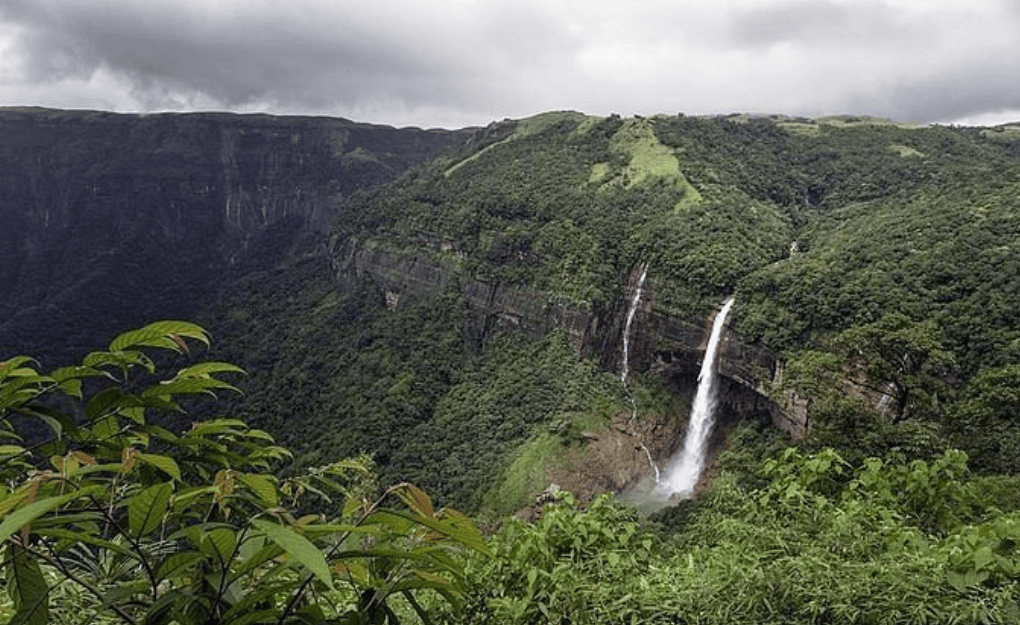Rainfall Decline in Meghalaya’s Sohra—historically renowned as the wettest place on Earth—has reached alarming levels in 2025, spotlighting the growing footprint of climate change on one of India’s most iconic weather zones. Known globally as Cherrapunji, Sohra recorded just 1,095.4 mm of rain this June, compared to 3,041.2 mm during the same period in 2024—a shocking 64% drop. Such a steep decline is not just a statistical anomaly but an environmental warning.
A Changing Climate in the Clouds
Sohra’s name has been synonymous with relentless downpours and lush green hills nourished by almost daily rainfall. But that image is now rapidly fading. In May 2025, the region faced a shortfall of nearly 400 mm, and over the last 15 years, average annual rainfall has declined from 11,000 mm to just 8,000–9,000 mm. This worrying trend indicates a long-term climate shift that is affecting both weather and water availability in the region.
Sohra once set a world record in 1974 with 24,555 mm of rain, a record that still stands today. But recent figures show that the region now gets barely one-third of that volume in a year, challenging the town’s long-held title as Earth’s rain capital.
What’s Behind the Rainfall Decline?
Several climatic and anthropogenic factors are converging to reduce rainfall in Sohra. Meteorologists and climate experts point to changing monsoon patterns, driven by rising sea surface temperatures in the Bay of Bengal and Arabian Sea. These changes alter the direction and intensity of monsoon winds, leading to irregular and reduced precipitation in high-rainfall zones like Sohra.
Deforestation has further compounded the problem. Once blanketed by dense subtropical forests, Sohra’s hills have seen increasing tree loss due to expanding agriculture, settlement growth, and tourism infrastructure. Trees play a crucial role in attracting and retaining moisture in the atmosphere; without them, rainfall generation and absorption are both compromised.
Urbanisation and tourism-led development have introduced impervious surfaces, disrupting the natural water cycle and reducing the land’s ability to retain rainwater. This adds to runoff, lowers groundwater recharge, and further reduces the local microclimatic moisture.
Water Scarcity in a Rain-Rich Town
The rainfall decline in Meghalaya’s Sohra has led to unexpected water shortages in a place historically defined by water abundance. Villages on the outskirts now depend on fragile springs, many of which run dry during lean months. Some communities require water tankers, a development unthinkable a few decades ago.
Population pressure adds to the strain. The town’s population has ballooned from 7,000 in 1961 to over 70,000 in 2025, increasing domestic water demand. Tourism, a key revenue generator, also consumes significant water resources—often at the cost of local residents.
Environmental Alarm and Calls for Conservation
Environmentalists warn that if current trends continue, Sohra may lose its ecological balance completely. Conservationists are advocating for urgent measures such as:
- Massive reforestation drives to restore lost forest cover.
- Watershed protection programs to safeguard natural springs and streams.
- Rainwater harvesting systems to supplement water availability.
- Stricter construction controls to prevent unsustainable urban growth.
These efforts aim to mitigate further rainfall loss and protect water security for future generations.
Official Response and Monitoring Efforts
The Meghalaya State Disaster Management Authority (MSDMA) and the India Meteorological Department (IMD) are actively monitoring rainfall trends and issuing periodic updates. However, reversing the damage will require long-term climate action, inter-departmental cooperation, and grassroots engagement.
There is growing consensus that adaptation alone is not enough. Without mitigation measures, including reducing greenhouse gas emissions and improving land use practices, the region may continue to face worsening drought-like conditions—even in a place once famed for its rain.
Conclusion: An Urgent Wake-Up Call
The rainfall decline in Meghalaya’s Sohra is more than a local issue—it’s a global climate alarm. As one of the most climate-sensitive regions in the world, what happens in Sohra could foreshadow trends elsewhere. If the wettest place on Earth can go dry, no region is immune.
Immediate and sustained action—at the local, national, and global levels—is essential to protect India’s ecological jewels like Sohra and secure the water future of its people.



